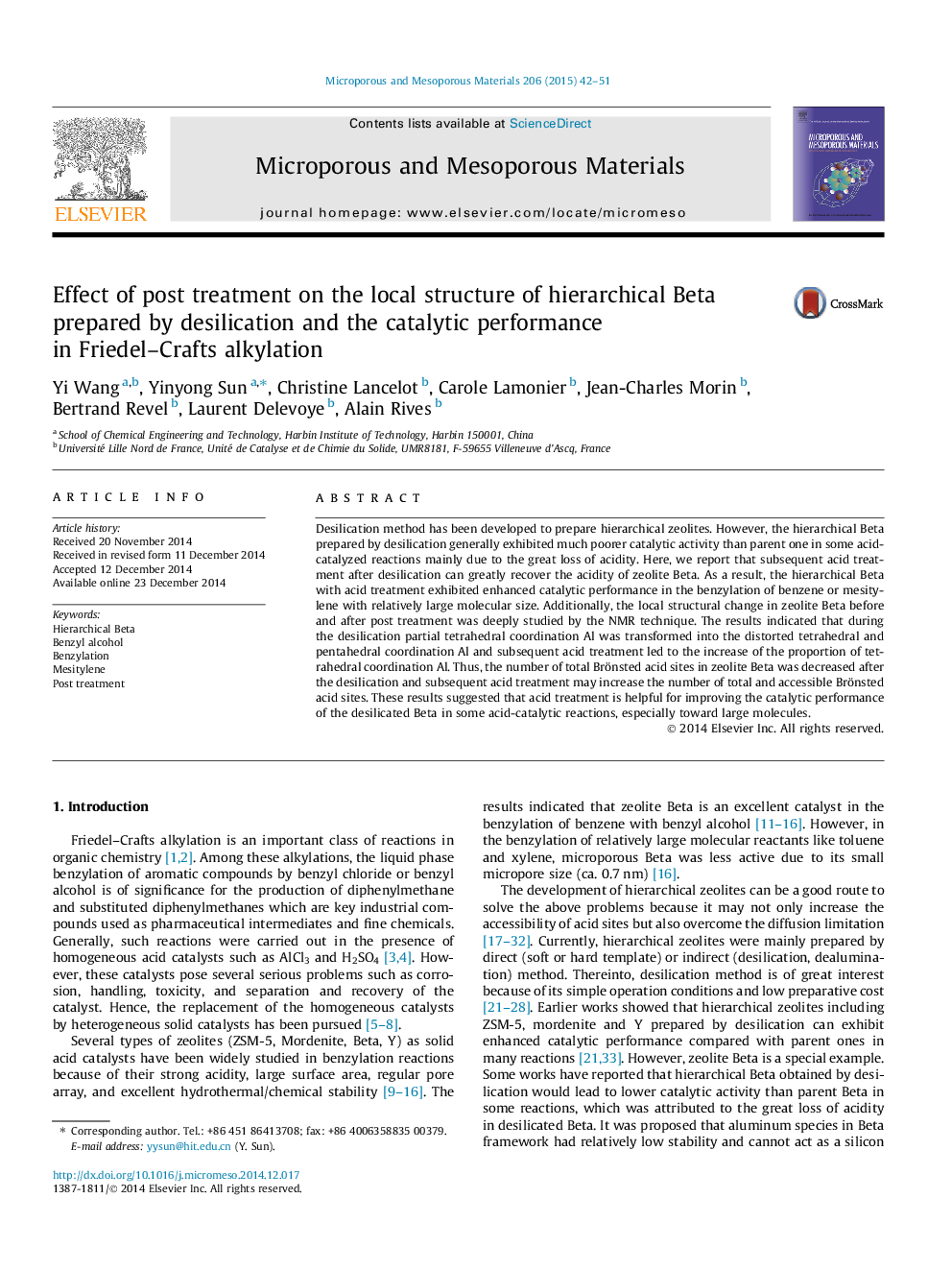| کد مقاله | کد نشریه | سال انتشار | مقاله انگلیسی | نسخه تمام متن |
|---|---|---|---|---|
| 72825 | 49035 | 2015 | 10 صفحه PDF | دانلود رایگان |

• The number of Brönsted acid sites in Beta was decreased after desilication.
• Partial Tetra Al was transformed into DTetra and Pent Al after desilication.
• Acid treatment may greatly recover the acidity of desilicated hierarchical Beta.
• The proportion of Tetra Al was increased after acid treatment.
• Hierarchical Beta with acid treatment exhibited enhanced catalytic performance.
Desilication method has been developed to prepare hierarchical zeolites. However, the hierarchical Beta prepared by desilication generally exhibited much poorer catalytic activity than parent one in some acid-catalyzed reactions mainly due to the great loss of acidity. Here, we report that subsequent acid treatment after desilication can greatly recover the acidity of zeolite Beta. As a result, the hierarchical Beta with acid treatment exhibited enhanced catalytic performance in the benzylation of benzene or mesitylene with relatively large molecular size. Additionally, the local structural change in zeolite Beta before and after post treatment was deeply studied by the NMR technique. The results indicated that during the desilication partial tetrahedral coordination Al was transformed into the distorted tetrahedral and pentahedral coordination Al and subsequent acid treatment led to the increase of the proportion of tetrahedral coordination Al. Thus, the number of total Brönsted acid sites in zeolite Beta was decreased after the desilication and subsequent acid treatment may increase the number of total and accessible Brönsted acid sites. These results suggested that acid treatment is helpful for improving the catalytic performance of the desilicated Beta in some acid-catalytic reactions, especially toward large molecules.
Figure optionsDownload as PowerPoint slide
Journal: Microporous and Mesoporous Materials - Volume 206, April 2015, Pages 42–51